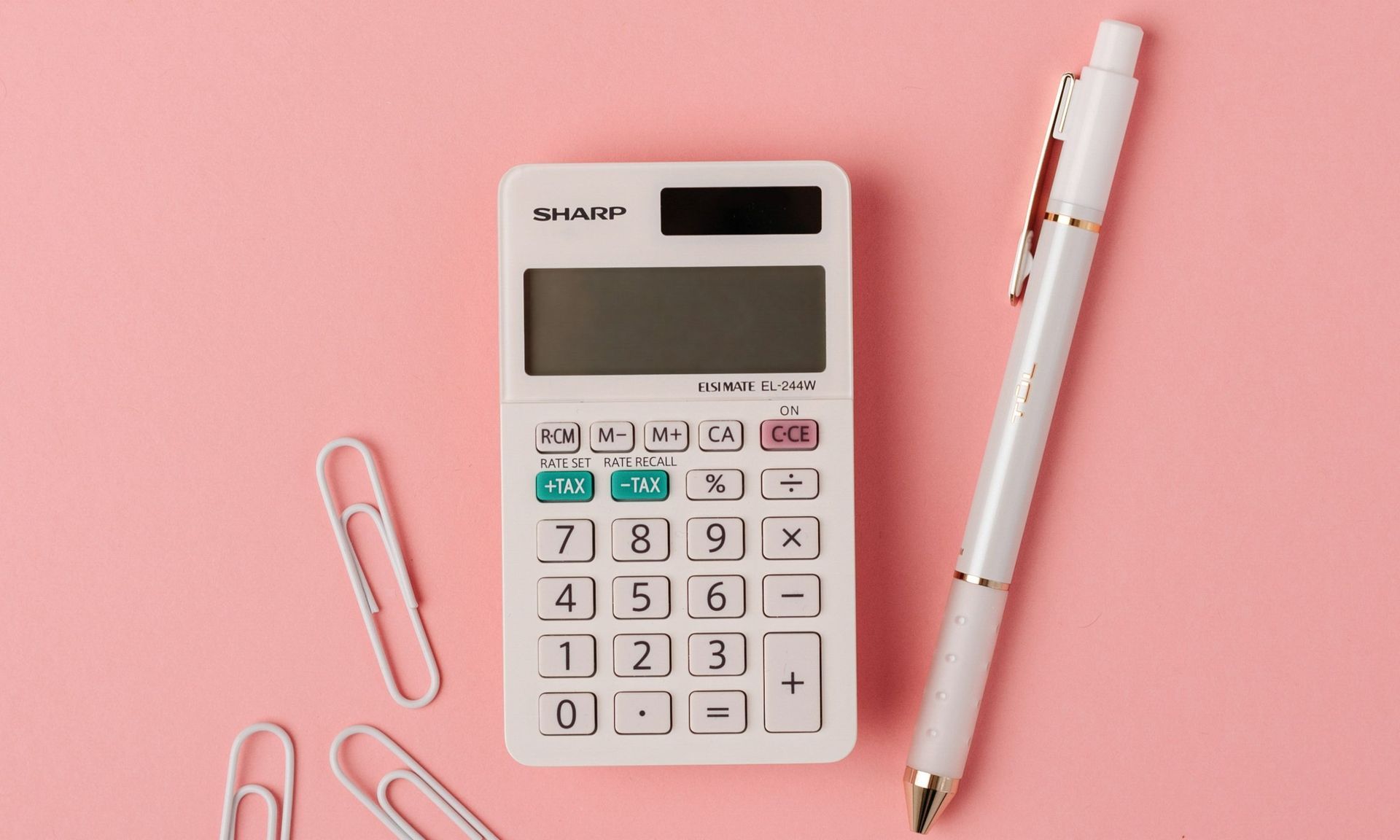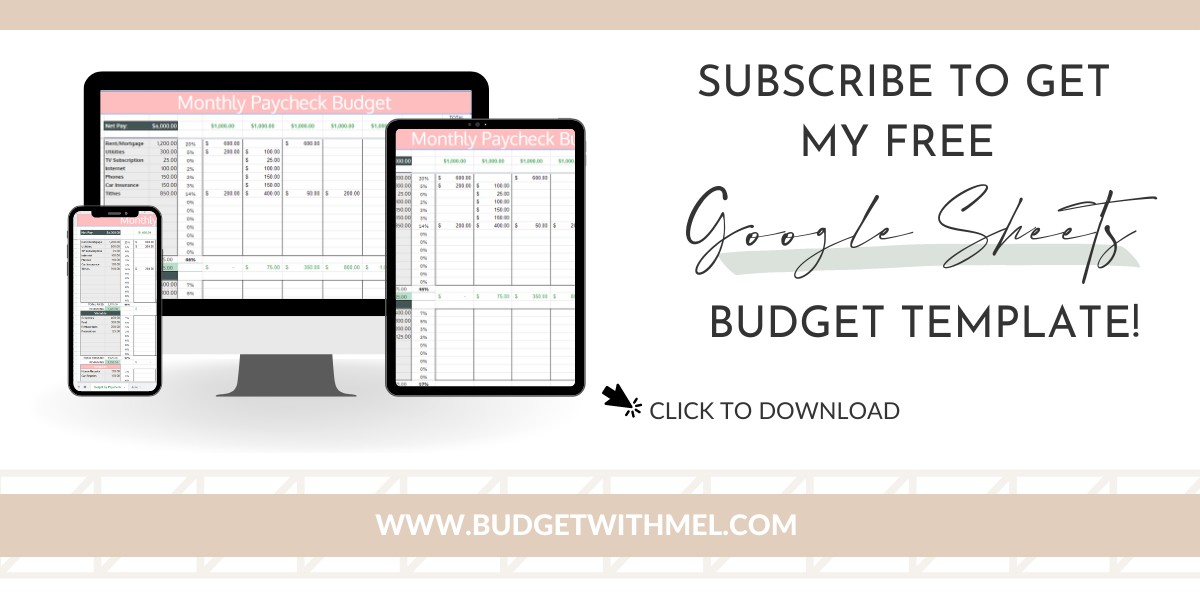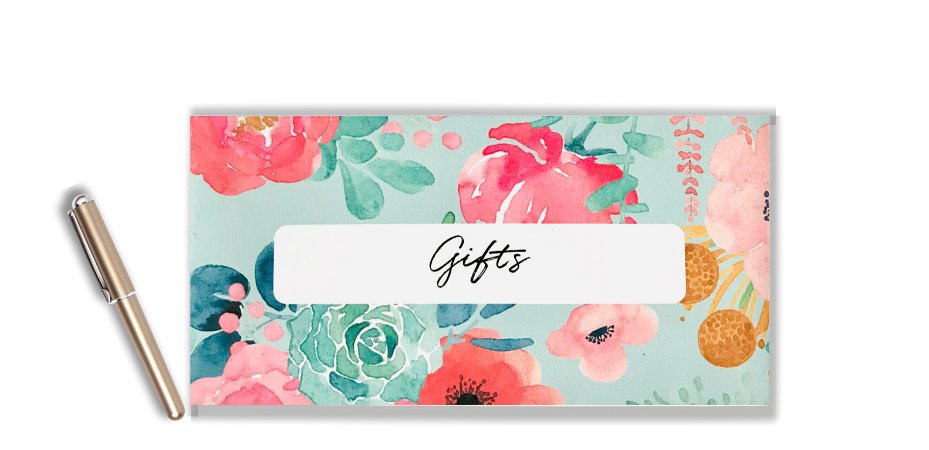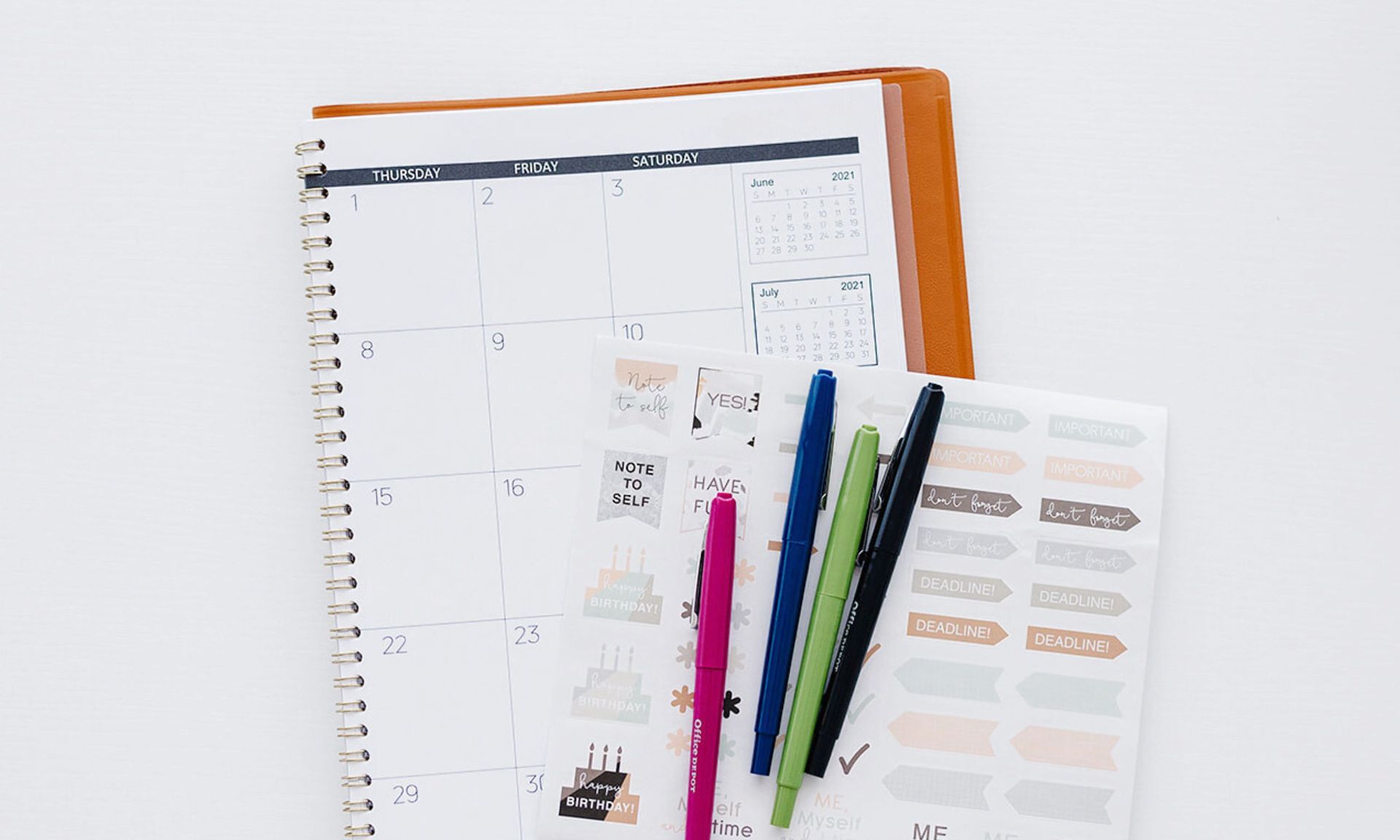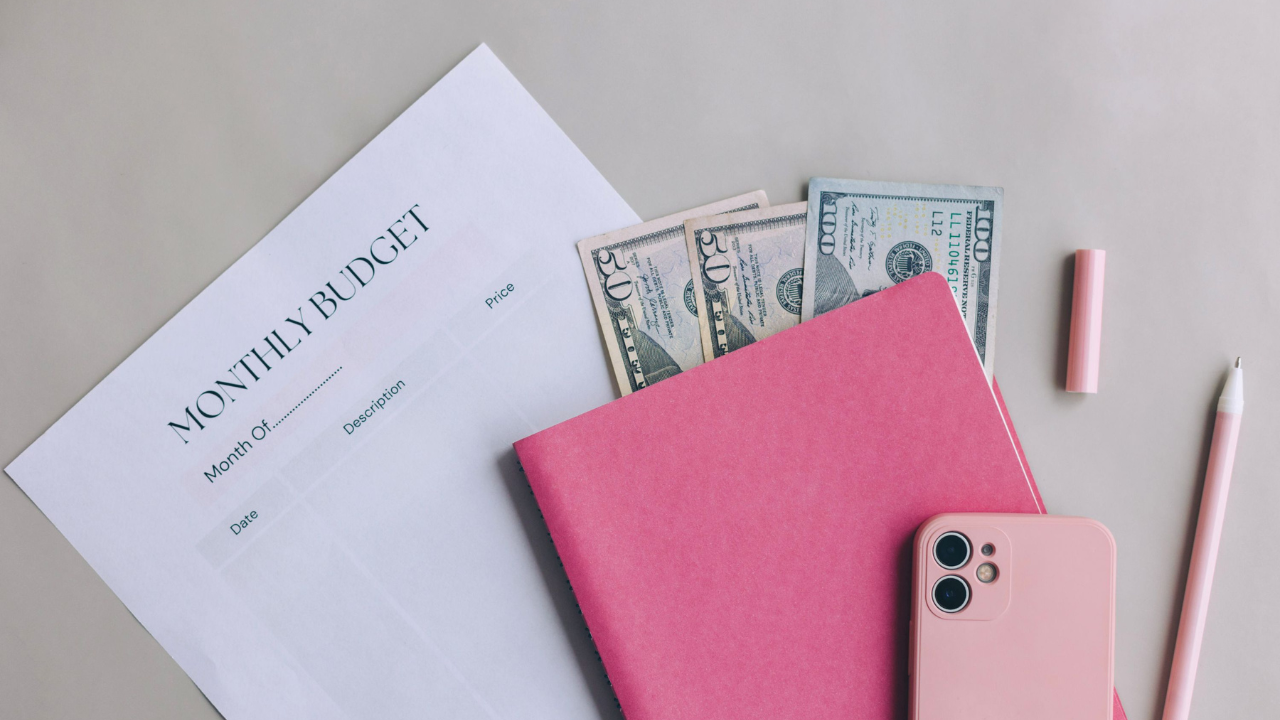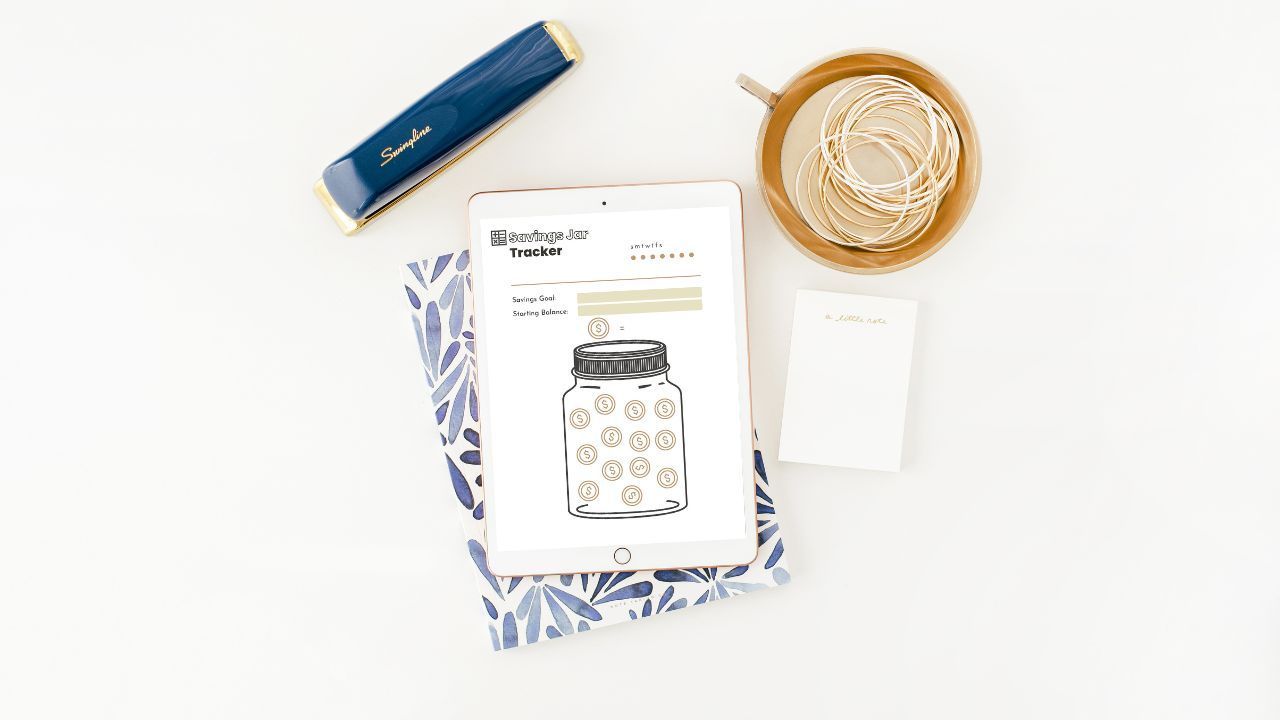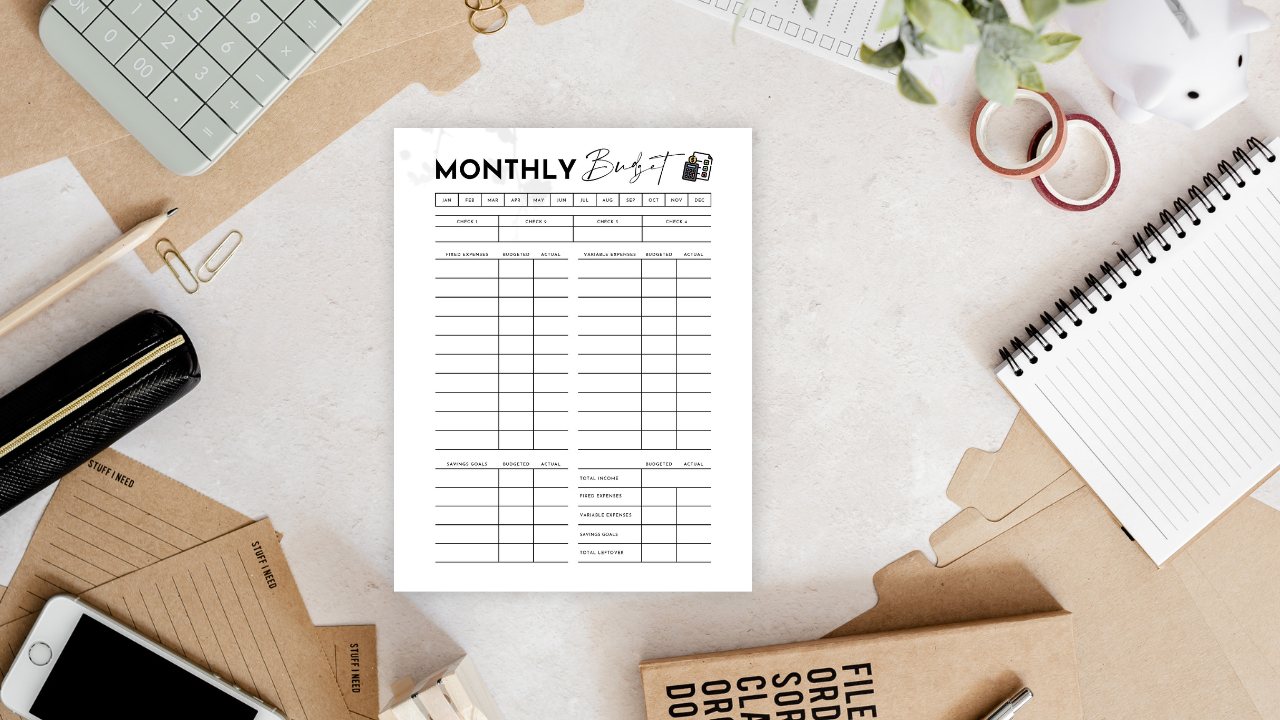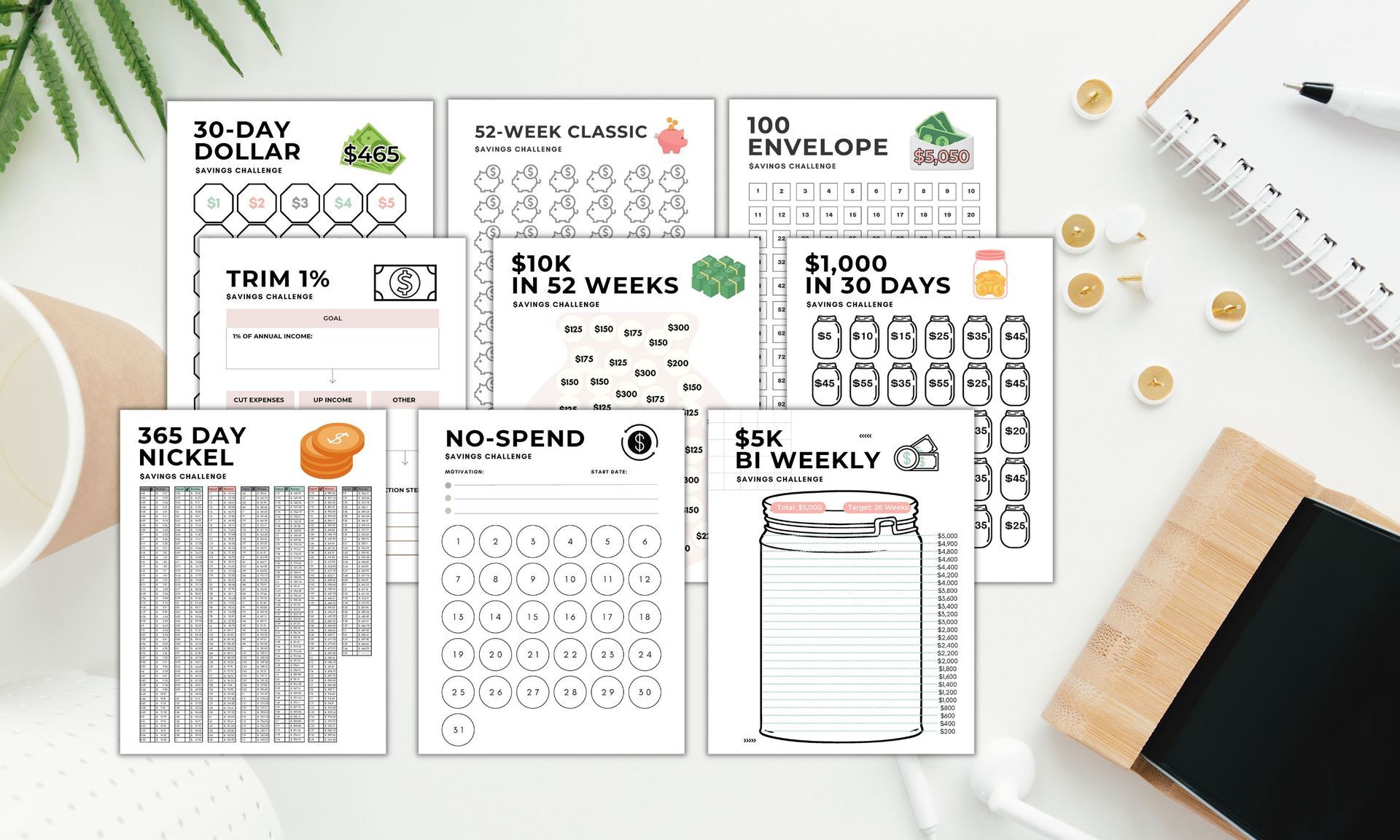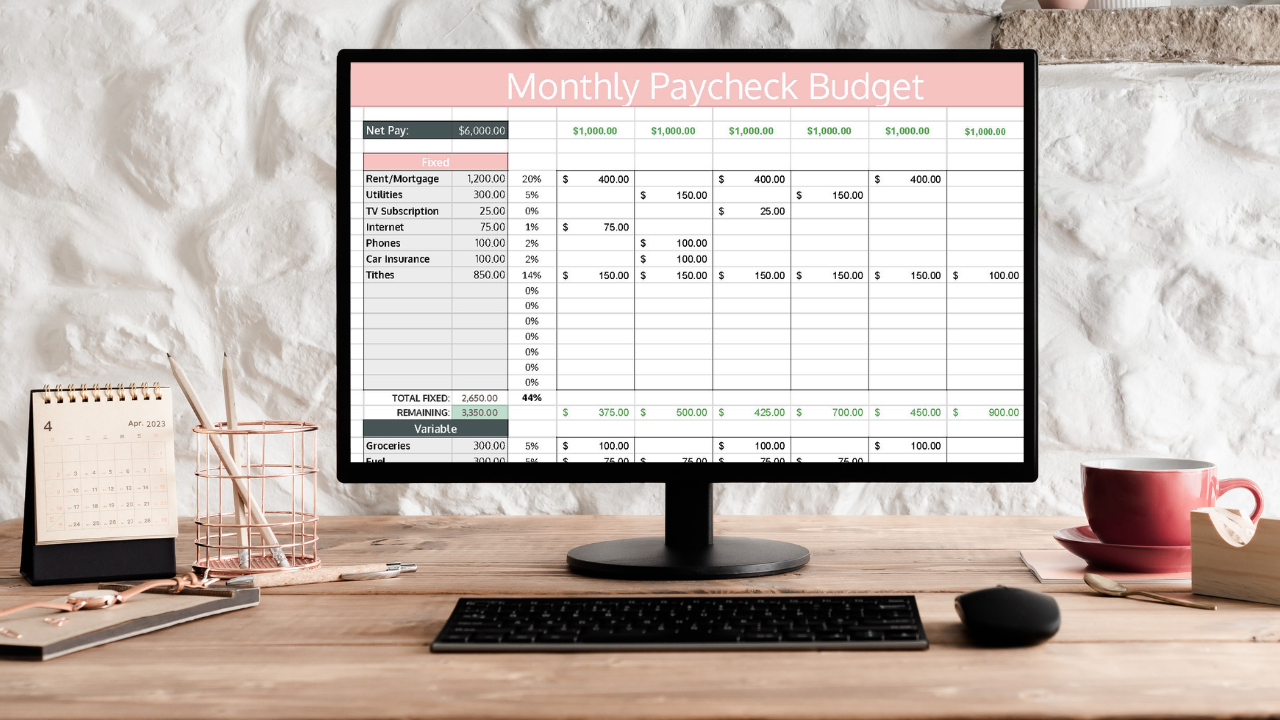Common Personal Budget Categories & Percentages
If you've ever wondered if what you're budgeting for certain categories is too much or too little, today I'd like to share recommended personal budget categories and budget percentages as a reference point for your monthly budget.
It’s hard to make progress towards financial goals when your budget is out of balance, meaning one or a few budget categories are eating up most of it.
While no two budgets will look the same, it can be helpful to reference general guidelines for monthly expenses to see how your budget compares.
Additionally, it’s a good idea to periodically review what percentage of your income is going to your different expense categories.
If you don’t know what you’re spending, or you have never set up a budget before, it’s a great time to start!
Think of your monthly budget as your personal finance roadmap to success. The word budgeting can bring feelings of overwhelm and dread for many people—but a budget gives freedom!
The freedom comes in prioritizing your expenses and then spending without guilt, knowing you have a plan in place. You’re not simply spending and figuring it out later. You’re proactively planning, and consequently, reaping the benefits of knowing you can spend without guilt!
Related Content:
Free Monthly Budget Template
The first step, before organizing monthly expenses into budget categories, is to choose a monthly budget template.
Once you have a monthly budget, you can use the recommended budget percentages below to gauge how you're doing with each budget category.
There are many different ways to budget, but the best way is to have a zero-based budget. This means that every single dollar of income is planned before the month / pay period begins.
No matter what your preferred budgeting method, I have a free template for you:
· Download my finance planner bundle
· Download my PDF monthly budget templates
· Get my google sheets budget spreadsheet
All you need to get started is a budget template or a blank piece of paper and a pencil or spreadsheet.
Let’s dive into the details!
Types of Expenses to put in your Personal Budget
A budget category typically has more than one expense, and each expense can be categorized as either a fixed expense or a variable expense. Moreover, each fixed or variable expense can be categorized as a discretionary and/or non-monthly expense.
Fixed Expenses
Fixed expenses do not change month to month and are typically due on the same day every month. You know exactly how much the expense will be and when it needs to be paid. Because of this, they are easy to budget for. Examples: rent/mortgage payment, utilities, monthly insurance premiums, etc.
Variable Expenses
Variable expenses do change month to month, though you may know when the expense is due. Because of the variable nature, an estimate is required for these expenses. I prefer to use a high average for these expenses. Examples: groceries, clothing, entertainment, travel, transportation, repairs & maintenance, gifts, etc.
Discretionary Expenses
Variable expenses are typically discretionary in nature and refers to” wants” rather than “needs.” Discretionary spending should be put into the budget last, to ensure all needs/essentials are prioritized.
Non-Monthly Expenses
To capture your true expenses, it’s important to budget for irregular expenses. Many people find themselves frustrated with budgeting because they fail to budget for non-monthly expenses. As a result, when an irregular expense arises during the month, it throws off the budget and they are scrambling to find a way to cash-flow it.
We’ve all had it—the car that needs new tires, the water heater that goes out, the school supplies we forgot about—these unexpected expenses are easier to swallow when we plan for them and have money set aside for them.
I recommend setting up sinking funds for these expenses, which you can read about in depth here.
Recommended Budget Percentages by Category
As we get into the details, keep in mind that this list of categories is a loose guide, not a prescription. Your personal budget may look different depending on various factors—how many kids you have, your monthly income, where you live, whether you’re a one
The Mechanics
Think of each monthly budget category as a file/folder, and each budget as the papers inside that folder.
How many different categories you have will depend on many different variables. It may be a matter of personality; some are more detailed than others.
When creating a household budget, start with the essential budget categories and continue in order of importance of each category.
Basic needs should be a high priority—food, utilities, housing, and transportation should be at the top of the budget.
The following budget categories will be organized differently from one person to the next but can and should be used as general budget categories!
Giving / Tithing (10%)

Three principles of any solid financial plan are saving, investing, and giving.
Saving and spending are easy to remember- many times we forget the give part.
As Christians, we tithe to our local church. Giving softens our hearts and frees us from dependence on money, allowing us to see God as our ultimate provider.
Related Posts:
Saving & Investing (10-15%)

Dave Ramsey has long recommended investing at least 15% of your gross income every single month after you have your emergency fund fully funded.
In addition, the savings category can include any future expenses you need to save up for—a new vehicle, a baby on the way, a down-payment for a home, and so on and so forth.
Emergency Fund
If you don't have an emergency fund, start by setting aside at least 10-15% every month until that is fully funded (6-12 months of expenses). How much money you set aside will depend on many factors. On one hand, if you have irregular income, saving 12 months of expenses is likely sufficient. On the other hand, if you have a predictable, stable income, six months of expenses may be sufficient.
Keep this fund in a separate bank account, such as a high-yield savings account.
Investing
Once your emergency fund is fully funded, make a goal to set aside 10-15% of your gross (before-tax) income into a tax-advantaged retirement account. This 10-15% does not include any employer matching option, rather, it is solely your contributions.
If your employer offers a retirement plan and a matching option, you should take advantage of this option. Depending on the variety of funds available through your workplace 401(k), you may want to open an individual retirement account (IRA) as well.
To make this a habit, consider setting up an automatic deduction from your paycheck or automatic ACH transfer into your retirement account on a regular basis.
Related Posts:
Food / Groceries (10-15%)

Aim to keep your monthly food budget at or under 10-15% of your income. No matter where you live, you’re likely experiencing and feeling the rapidly rising cost of groceries.
According to research, on average, Americans spend 11% of disposable income on groceries, the highest in over three decades.
It’s important you do not estimate this number if you are not on a budget, because typically your best guess is way off. All the trips to the store add up really fast.
I’ve used a meal planning service called $5 Meal Plan to help me stick to my grocery budget—it was especially helpful when I had just started meal planning and had lots of littles at home (meaning not much time to plan). I had a meal plan made for me and the recipes and my shopping list sent right to my inbox every week.
Time is money when you’re a young stay-at-home mom to lots of littles, and it was worth the $5 per month for our family! Plus, the money we saved by having a plan for meals was far more than $5 monthly!
See the resources listed below for more information on how I save thousands every year on groceries!
Related Content:
Utilities (5-10%)
Utilities includes expenses such as trash, electricity, water, internet and cable.
This is relatively straightforward, but if any of the expenses in this category are busting your budget (like cable TV), then find a way to make these expenses as low as possible.
Housing (15-25%)
Housing expenses include rent or mortgage payment + property taxes, insurance, repairs, and any HOA fees or other dues/fees.
With the current real estate market, housing can be a hole that sinks your family’s income. It’s important to safeguard against being house-poor.
A good rule of thumb to follow is your mortgage (or rent) and other housing costs should not be more than 25% of your total take-home pay.
If you don't stick to this rule, you are at high risk of being house poor. Initially it might work out, but as your family (and expenses) grow, inflation rises and everyday items become more expensive, property taxes go up, you’ll likely start to feel the weight of high housing costs eating away at your income.
When you're first married and have double income no kids, it might be easy to make a mortgage payment that is 30-40% of your total take-home pay.
However, most people don't stay in the double income no kids situation.
Add in a couple kids, a stressed mom who decides to go part-time, sports and school activities, medical emergencies, and suddenly that mortgage payment starts to sink your ship, leaving no room to save or invest.
Related:
Transportation (10%)
Transportation costs include gas, car repairs, parking fees, registration, public transportation, dues, tolls, etc.
On a monthly basis, this budget category should include the above expenses. A sinking fund should also be set up for car repairs and maintenance. This way, those irregular expenses (oil changes, new tires, new brakes, etc.) don’t’ sneak up on you, and you have the cash ready to go when these repairs and maintenance are necessary.
Health (5-10%)
The health budget category includes prescriptions, doctor visits, dentist visits, medical bills, and any other related health care costs.
Spending on health will obviously fluctuate month to month, so I'd once again recommend setting up a sinking fund for unforeseen medical expenses.
A really short definition of a sinking fund is just a budget category that rolls over every month (the balance rolls over).
So if you start budgeting $100 a month for medical needs and you don't have any medical expenses this month, you'd carry that amount over to the next month and keep adding to it every month.
If you have a high-deductible medical plan, the best way to save for medical expenses is by opening a health savings account (HSA) and making tax-free contributions to it! Ask your employer for more information, if applicable.
Personal Spending (5-10%)
Be sure to have a fun money or personal expenses budget category, to allot for the extras in life! It's essential that you allow yourself some splurge money (even if you're getting out of debt). This way, you aren’t tempted to binge outside the budget.
When you’re on a tight budget, like when you’re paying off debt, this might only be $20-$50 per month. As your income grows and you become debt-free, this category may have more wiggle room.
Personal spending cash is for things like coffee, personal care, fast food, or even larger extra expenses.
This budget category will revolutionize your spending habits. Now, you’re planning for impulsive purchases, rather than haphazardly spending without knowing whether you can afford it!
Insurance (10-25%)
It is recommended that total insurance costs (even the ones in other categories) should fall below 25% of your income.
For example, although homeowners’ insurance would technically go under housing, include it in the calculation of total insurance costs in the budget.
Below is a non-exhaustive list of insurance costs:
· Health insurance
· Auto insurance
· Homeowners insurance
· Renters insurance
· Life insurance
· Disability insurance
· Long-term care insurance
Proper insurance coverage is necessary for financial stability. Thus, your insurance costs will likely rise as your family grows and situations change.
As you are blessed with more children, you’ll need more life insurance coverage and better health insurance coverage.
It’s a good idea to have an insurance “check-in” every time a major life event occurs/circumstances change to ensure coverage is sufficient.
Recreation (5-10%)
Similar to your personal spending or fun money, the recreation category is for dining out, date night, or any other family activities you want to do.
Maybe you are planning on going to a concert, fair, or to the water park with your kids. Or you'd like to get in shape and purchase a gym membership.
These are the kind of expenses that should be posted against the recreation category.
Miscellaneous (5-10%)
The miscellaneous category is for things that pop up during the month that are not an emergency. Consider this the “catch-all” fund.
It's nearly impossible to have a zero based budget and plan for everything unless you have a miscellaneous category.
Use the miscellaneous fund for expenses like a birthday party you forgot about, the family that came to visit, etc.
Debt (5-10%)
It’s hard to reach financial goals when debt is eating your income every month. If you have any form of consumer debt—student loans, credit card debt, personal loans, car loans— make a debt repayment plan. The debt snowball method, made famous by Dave Ramsey, is a simple and effective way to pay off debt quickly.
While a car payment is the “norm” today, that doesn’t mean it has to be. A car payment is a huge financial burden for many families! Imagine how much extra money would be freed up in the budget if you didn’t have a car payment?
On the same note, if you find that you’re using credit cards to fill the gap between income and expenses at the end of the month, then you’re living in a budget deficit. While it seems drastic, cutting up your credit cards might be just the prescription you need. Forcing yourself to live on cash (at least temporarily) will change your money behaviors drastically!
More debt payoff tips:
- Free Debt-Free Coloring Pages
- How to Attack Debt with Intensity
- The Truth About Debt (That No One Tells You)
- How to Attack Your Student Loan Debt in College
- Have Fun While Paying Off Debt: Best Tips
- 10 Mistakes to Avoid if you Want to Get Out of Debt Fast
- How We Paid Off Over $20k of Student Loan Debt in 12 Months
Sample List of Budget Categories
Your budget is a snapshot of your priorities. This is the benefit of budgeting—you determine what your priorities are and create a budget based on those priorities. It doesn’t matter how much money have—a budget works for every financial situation.
In the list of budget categories below, some expenses are listed under multiple categories. The reason being it is a matter of personal preference how expenses are categorized.
For example, I prefer to have a separate budget category titled “kid’s expenses” that includes diapers/wipes, their extracurricular activities, etc. I’m a detailed budgeter, I prefer to have more categories as opposed to broad categories that include many different expenses.
Saving & Investing
- Emergency fund
- Retirement contributions
- Vehicle replacement
- Baby fund (birth expenses, supplies, maternity leave, etc.)
- Home down-payment
- Major home renovations
Giving
- Tithing
- Donations
- Random giving
Food / Groceries
- Groceries
- Membership fees (Costco, Sam's, etc.)
- Restaurants
Utilities
- Electric / gas
- Phone
- Cable
- Trash
- Sewer
- Water
- Internet
Housing
- Mortgage / rent
- Property taxes
- HOA dues
- Repairs & maintenance
- Furniture replacement
- Home renovations
Transportation
- Fuel
- Parking
- Tolls
- Subscriptions (AAA, Sirius XM, etc.)
- License / registration / fees
- Vehicle replacement fund
- Repairs & maintenance
Health & Wellness
- Doctor / functional medicine costs
- Dental care
- Eye care
- Chiropractic care
- Physical therapy
- Acupuncture
- Prescriptions
- Vitamins / supplements
Personal
- Toiletries
- Beauty
- Personal spending
- Subscriptions
- Gifts
- Clothing
Insurance
- Health
- Homeowners / renters
- Vehicle
- Life
- Disability
- Long-term care
Recreation / Entertainment
- Entertainment
- Restaurants
- Vacations
- Travel expenses
- Sports
- Hobbies
Subscriptions
- Streaming services
- News / political commentary
- Household supplies
- Music (Apple, Spotify, etc.)
Legal & Planning
- Estate planning & will preparation
- Tax prep & planning fees
- Bookkeeping services
- Lawyer / attorney fees
Misellaneous
- Unplanned expenses
- Pets (dog food, vet are, training, etc.)
Household items (non-grocery expenses)
- Laundry supplies
- Cleaning supplies
- Toiletries
- Home security
- Pet management
- Lawn care
- Office supplies
- Pool supplies
Gifts
- Birthdays
- Weddings
- Anniversaries
- Showers
- Christmas
- Teachers
- Thank - you
- Funerals / memorials
Kids
- Diapers & wipes
- Sippy cups / bottles
- Playdates / field trips
- Babysitter / childcare
- Clothing
- Gifts
- Parties & celebrations
Homeschool / Education
- Supplies / books
- Storage / organization
- Field trips
- Co-op dues / fees
- Private school tuitions
- Registration / application fees
- Extra - curriculars / electives
Pets / small farm expenses
- Food (grain, hay, etc.)
- Medical care
- Bedding
- Equipment
- Repairs & maintenance
Debt Payments
- Car loan
- Student loan
- Credit card debt
- Personal loans
Cash Envelopes
If you have trouble sticking to your budget even after trying it for a few months, using cash envelopes for the tricky categories is the way to go!
The budget categories that can be the hardest to stick to include groceries, personal spending, and dining out.
The envelope system is a tool in your arsenal you can use to stick to your budget.
You don't have to use the envelope system for every budget category, just the categories you tend to overspend on.
To get my free cash envelope template, subscribe to my email list (+ get exclusive tips and tricks from me on budgeting, investing, and turning a profit in your household).
Related Content:
Adjusting the budget
Life changes, your needs change, your circumstances change, and thus your budget will change.
This can be especially difficult for finance nerds like me, who have a hard time adjusting as life gets more expensive.
For instance, if/when you have kids, your budget will look quite a bit different than if you're single or married with no kids, and we should rejoice—what a gift from the hand of the Lord.
Not only should we adjust our budget, but we should trust His provision for us. If we truly believe in His sovereignty, we can trust that when our circumstances are difficult, maybe even seemingly impossible, He will provide for our needs.

Share this post!
